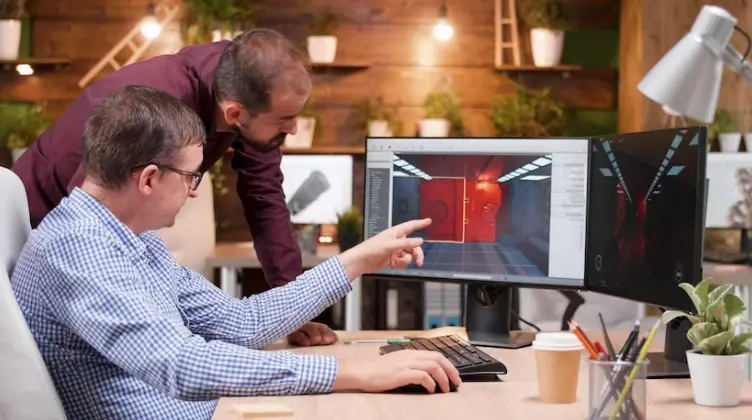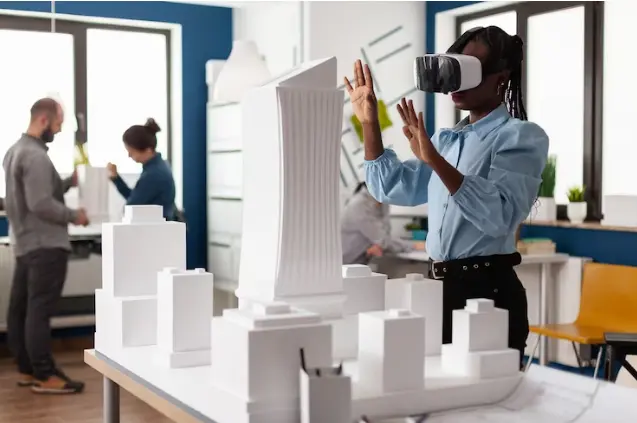
The realm of construction, traditionally characterized by its conservative methodologies and gradual acceptance of emerging technologies, is presently undergoing a profound metamorphosis courtesy of cutting-edge 3D printing. This groundbreaking technology, once limited to crafting diminutive prototypes, has now reached a juncture where it is fundamentally reshaping the landscape of structural development. In this discourse, we shall delve into the transformative influence of advanced 3D printing on the construction sector, elucidating its merits, and confronting the challenges that beset it.
The Evolution of 3D Printing in Construction
3D printing, or additive manufacturing, entails the incremental deposition of materials to fabricate objects. In the domain of construction, the progression of 3D printing has transmuted from the production of minuscule models to the printing of life-sized edifices and infrastructures. This evolution has been made viable through advancements in materials, printing methodologies, and software intricacies.
Advantages of Advanced 3D Printing in Construction
Velocity and Efficacy:
Foremost among the advantages conferred by 3D printing in construction is its rapidity. Traditional construction techniques often necessitate copious labor and time investments, whereas 3D printing can expeditiously engender intricate structures stratum by stratum, thereby considerably curtailing construction timelines.
Economic Prudence:
Advanced 3D printing possesses the potential to substantially reduce construction expenses by minimizing wastage, diminishing labor prerequisites, and optimizing material consumption. This fiscal frugality renders construction more attainable, especially for endeavors oriented towards affordable housing.
Liberation of Design:
3D printing affords the latitude for intricate and unorthodox architectural schematics that were hitherto arduous or cost-prohibitive to realize. By facilely printing complex geometries, architects and designers can venture into novel realms of creativity.
Eco-Friendliness:
A multitude of 3D printing technologies incorporate ecologically sound and recyclable materials, thus mitigating the environmental footprint of construction endeavors. Furthermore, the reduction in waste generation and transportation also contributes to a more eco-conscious construction process.
Bespoke Adaptability:
3D printing facilitates on-site customization, streamlining the accommodation of specific project requisites and site exigencies. This level of adaptability is particularly invaluable for distinct or remote construction undertakings.
Principal Applications and Exemplars

Residential Solutions:
3D printing has been harnessed to craft cost-effective and sustainable housing solutions in diverse global locales. These printed dwellings not only economize expenses but also address housing scarcities and the predicament of homelessness.
Infrastructure and Overpasses:
Large-scale 3D printers have presently acquired the capability to produce intricate structural components for bridges and other infrastructural ventures, augmenting their longevity and diminishing the necessity for frequent maintenance.
Emergency Relief:
In disaster-ravaged regions where conventional construction methods might be challenging to expeditiously implement, 3D printing can proffer swift construction remedies.
Challenges and Prospects on the Horizon
While advanced 3D printing holds prodigious potential for the construction domain, it contends with specific challenges. These include impediments stemming from regulations, apprehensions about scalability, and the imperative need for adept operators and technicians. However, as this technology continues its maturation trajectory, it is probable that these impediments will be effectively surmounted.
Gazing forward, the outlook for advanced 3D printing in construction appears luminous. As research and development pursuits persist, one can anticipate further innovations in materials, methodologies, and applications. The construction industry, heretofore characterized by its aversion to change, is now embracing this transformative technology to forge a more efficient, sustainable, and inventive built environment.
Conclusion
Advanced 3D printing is inaugurating a novel epoch in construction, fundamentally redefining our conception of architectural design, execution, and ecological responsibility. As an increasing number of stakeholders acknowledge the advantages and potential of 3D printing, it becomes manifest that this technology will assume a pivotal role in shaping the trajectory of the construction sector. With its capacity to expedite construction processes, curtail expenditures, and facilitate pioneering designs, advanced 3D printing indisputably emerges as a revolutionary force that is here to endure.
Read More: PlayStation portal hands-on remote play





